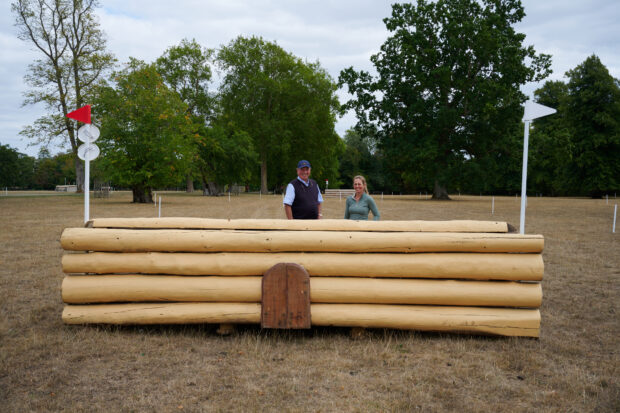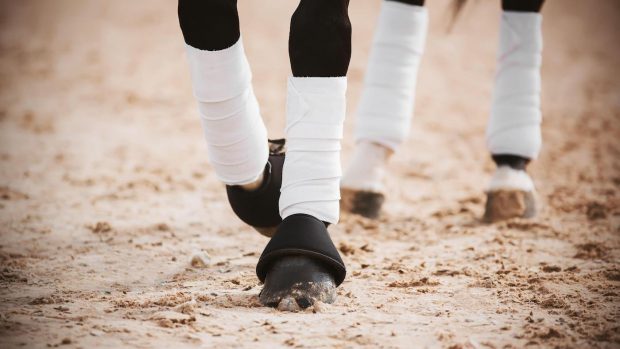Liphook Equine Hospital veterinary nurse Anna Stone talks you through how to put a stable bandage on your horse — ensuring correct positioning and that you are not applying too much pressure.
All horse owners should know how to put on stable bandages – which can also be described as “wrapping legs” – correctly.
If bandages are applied too tightly, they can cause pressure sores, necrosis due to restricted blood flow or soft tissue damage. If they are too loose they can slip off and become a trip hazard.
You will need:
- quilted pad, Fybagee or Gamgee pads
- stable bandages (fastening with Velcro)
How to put on a stable bandage
- First, brush the horse’s legs off so that there is no bedding or mud that will get stuck underneath the bandage and cause rubbing or pressure sores
- Crouch beside the horse (do not kneel)
- Aiming for the bandage to cover from just below the horse’s knee or hock down to the coronet band, wrap the pad around the leg with even pressure, finishing with the seam on the outside of the leg, so that any extra pressure won’t lie on the tendons or the front of the leg. Some quilted pads, such as Waldhausen’s, have a velcro strip to help keep it in place
- While holding the pad in place, take the bandage and start midway down the leg. Wrap the bandage around the leg with a nice even pressure, aiming for half a width of wrap covering each time
- Go down to just below the fetlock and then start to come back up the leg
- Continue wrapping in the same way up to just below the knee or hock, fastening at the top with the velcro
- There should be no creases or wrinkles, as these will cause pressure points and restrict blood flow
- Check the pressure. You should easily be able to fit two fingers down from the top and up from the bottom, so you know it won’t be too tight and will be comfortable for the horse
- Change stable bandages at least once a day
- To remove, unfasten the velcro and carefully but quickly unwind the bandage by passing the bandage from hand to hand, neatly collecting the bandage up as you go so that there is no loose trail.
- Shake off any bedding and roll up the bandage with the Velcro inside so that this comes out last when you are putting the stable bandage on. The Velcro fastening should be stuck to itself and facing upwards as you reroll. Quick tip: new bandages are often fastened with the Velcro on the outside, so you’ll need to reroll them before you start.
Why use stable bandages?
- The horse’s legs might need support, for instance if he has an injury such as to his tendon. You should also bandage the opposite leg to provide additional support to the uninjured leg, which is likely to be taking more weight
- You might want to protect a wound that requires a bit of cover, and some owners choose to use them as protection during transport
- Stable bandages can reduce swelling of the lower limbs for horses on box rest
- They can also provide some warmth and comfort to recuperating horses and protect the lower limbs from bruising if he is lying down more than usual due to illness or injury.
However, a bandage applied incorrectly can do more harm than no bandage at all, so make sure you practise this skill dozens of times with someone knowledgeable to check your work to become proficient.
You may also be interested in…

From a muddy field to the show ring: a complete guide on how to groom a horse

How good is your bath-time game? Here’s the best way to wash horses…

Subscribe to Horse & Hound magazine today – and enjoy unlimited website access all year round

Some of the best stable bandages and wraps — essential items to have on your yard
Stable bandages and leg wraps provide support for tired legs, help to prevent post-exercise swelling and also give warmth and
Horse & Hound magazine, out every Thursday, is packed with all the latest news and reports, as well as interviews, specials, nostalgia, vet and training advice. Find how you can enjoy the magazine delivered to your door every week, plus options to upgrade your subscription to access our online service that brings you breaking news and reports as well as other benefits.




